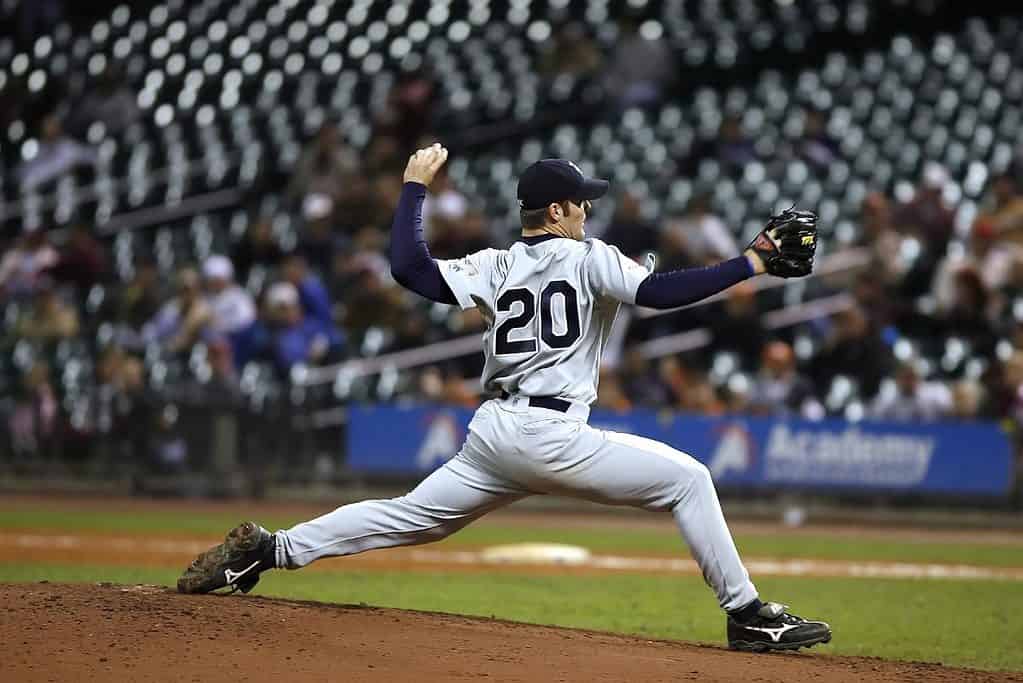Whip is a term that is commonly used in baseball to measure a pitcher’s effectiveness. It is an acronym for “Walks plus Hits per Innings Pitched.” WHIP is calculated by adding the number of walks and hits a pitcher allows and dividing that number by the number of innings pitched. The lower the WHIP, the better the pitcher is performing.
WHIP is a valuable statistic because it takes into account both the number of walks and hits a pitcher allows. A pitcher who allows a lot of hits but few walks can still have a low WHIP if they are able to get outs and limit damage. Conversely, a pitcher who allows a lot of walks but few hits may have a high WHIP if they are unable to get outs and allow runners to advance. Understanding WHIP can help fans and analysts evaluate a pitcher’s performance and predict their future success.
What is WHIP in Baseball?
WHIP is a valuable pitching statistic because it takes into account the number of base runners a pitcher allows, regardless of how they got on base. A pitcher with a high WHIP is allowing too many base runners, which puts their team’s defense at a disadvantage.
In contrast, a pitcher with a low WHIP is preventing base runners and keeping their team’s defense in a better position to make plays. A good WHIP for a pitcher is generally considered to be below 1.20.
WHIP can also be used to compare pitchers across different eras and leagues. It is a useful tool for evaluating a pitcher’s performance over the course of a season or career.
It is important to note that WHIP is just one of many statistics used to evaluate pitchers. Other important statistics include ERA (earned run average), innings pitched, and innings pitched ratio. These statistics can provide a more complete picture of a pitcher’s performance.

History of WHIP in Baseball
WHIP, or Walks plus Hits per Inning Pitched, is a statistic used in baseball to measure a pitcher’s effectiveness. It is calculated by adding the number of walks and hits allowed by a pitcher and dividing it by the number of innings pitched. The WHIP statistic was first introduced by Daniel Okrent in 1979, but it was not until the 1980s that it gained popularity among baseball fans and analysts.
The use of WHIP has become widespread in baseball, and it is now considered one of the most important statistics for evaluating a pitcher’s performance. The statistic has been used to compare pitchers across different eras and to identify the most dominant pitchers of all time.
Some of the greatest pitchers in baseball history have posted impressive WHIP numbers. Addie Joss, who played for the Cleveland Naps in the early 1900s, holds the record for the lowest career WHIP at 0.97. Ed Walsh, who played for the Chicago White Sox from 1904 to 1917, holds the record for the lowest single-season WHIP at 0.82.
In recent years, several pitchers have posted impressive WHIP numbers. Clayton Kershaw, a left-handed pitcher for the Los Angeles Dodgers, has a career WHIP of 1.00, while Pedro Martinez, a former pitcher for the Boston Red Sox, has a career WHIP of 1.05. Jacob deGrom, a right-handed pitcher for the New York Mets, won the National League Cy Young Award in 2018 and 2019 with a WHIP of 0.91 and 0.96, respectively.
Other notable pitchers with impressive career WHIP numbers include Mariano Rivera, Chris Sale, Guy Hecker, Cy Young, Walter Johnson, Christy Mathewson, Babe Ruth, Mordecai Brown, Max Scherzer, Tommy Bond, Justin Verlander, and Nolan Ryan.
How to Calculate WHIP
WHIP stands for Walks plus Hits per Inning Pitched. It is a statistic used to measure a pitcher’s control and effectiveness. To calculate WHIP, you need to know the total number of walks and hits allowed by a pitcher and the number of innings pitched.
The formula to calculate WHIP is:
WHIP = (Walks + Hits) / Innings Pitched
For example, if a pitcher allowed 50 hits and 20 walks in 100 innings pitched, the WHIP would be:
WHIP = (50 + 20) / 100 = 0.70
This means that, on average, the pitcher allowed 0.7 base runners per inning.
WHIP is a useful statistic because it takes into account both walks and hits, which are two of the most important factors in determining a pitcher’s effectiveness. A high WHIP indicates that a pitcher is allowing too many base runners, while a low WHIP indicates that a pitcher is effectively limiting base runners.
It’s important to note that not all hits are created equal when calculating WHIP. A single is not as damaging as a double, triple, or home run. However, for the purposes of calculating WHIP, all hits are treated equally.

In summary, WHIP is a key statistic used to measure a pitcher’s control and effectiveness. It is calculated by dividing the total number of walks and hits allowed by the number of innings pitched. A low WHIP indicates that a pitcher is effectively limiting base runners, while a high WHIP indicates that a pitcher is allowing too many base runners.
WHIP and Sabermetrics
WHIP is also an important component of sabermetrics, a statistical approach to baseball analysis that emphasizes objective data over traditional scouting methods. Sabermetricians use WHIP as part of their evaluation of pitcher performance, along with other metrics such as strikeout rate and home run rate.
While there is a correlation between WHIP and wins, it is important to note that WHIP alone does not guarantee success. Pitchers with high strikeout rates and low walk rates may have a lower WHIP but still struggle to win games if they do not receive adequate run support from their team.
WHIP in Fantasy Baseball
WHIP, or Walks Plus Hits per Inning Pitched, is a commonly used statistic in baseball that measures a pitcher’s effectiveness in preventing base runners. In fantasy baseball, WHIP is an important metric to consider when drafting or selecting pitchers for your roster.
In a rotisserie league fantasy baseball format, WHIP is often one of the categories used to determine a team’s overall score. A lower WHIP indicates a pitcher is allowing fewer base runners, which can lead to more strikeouts, wins, and overall success in fantasy baseball.
When analyzing a pitcher’s WHIP, it’s important to also consider their strikeout rate, as pitchers who strike out more batters are less likely to allow hits and walks. Additionally, a pitcher’s home ballpark and the quality of their defense can also affect their WHIP.
Analytical data can also provide insights into a pitcher’s WHIP. For example, a pitcher’s expected WHIP, based on the quality of contact they allow and their strikeout and walk rates, can provide a more accurate picture of their performance and potential for future success.
National Baseball Hall of Fame and WHIP
The National Baseball Hall of Fame in Cooperstown, New York, honors the game’s greatest players, managers, umpires, executives, and pioneers who have made significant contributions to baseball. Many Hall of Fame pitchers have impressive WHIPs, indicating their dominance on the mound. For example, Pedro Martinez, a three-time Cy Young Award winner, had a career WHIP of 1.054, while Sandy Koufax, a two-time World Series MVP, had a career WHIP of 1.106.
However, there are also pitchers in the Hall of Fame who had higher WHIPs but were still dominant in their era. For instance, Nolan Ryan, with a career WHIP of 1.247, is widely regarded as one of the greatest pitchers of all time.
- Fenway Park Seating Chart: Best Seats To See the Red Sox - July 17, 2023
- What is RBI in Baseball: A Simple Explanation of The “Ribby” - July 3, 2023
- What is DFA in Baseball? A Term No Player Wants to Hear - July 3, 2023








